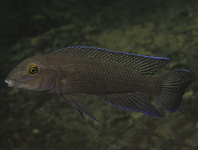Abstract
The freshwater shrimp genus Atyaephyra de Brito Capello, 1867 is a complex of cryptic species with morphologically overlapping features, which has led to invalid identifications until recently. The genus is distributed around the entire Mediterranean Basin and surrounding areas. In 2009 we used a molecular approach with 16S and Cox1 genes to identify the European and African populations and to show the existence of different species and groups of haplotypes (García Muñoz et al. 2009). Christodoulou et al. (2012) recently identified four species in Greece (Atyaephyra stankoi, A. thyamisensis, A. strymonensis and A. acheronensis) based on morphology and some partial sequences of Cox1. In the present study we analyse several Greek populations of Atyaephyra spp. using morphology and two mitochondrial markers (16S and Cox1). Our molecular data confirm the taxonomic validity of A. stankoi, A. thyamisensis and A. strymonensis but show that A. acheronensis should be considered a synonym of A. desmarestii. The limited distribution of A. desmarestii in only a few rivers in the Ionian region is probably the result of a posterior introduction from neighbouring European areas. After the genetic identification and as a consequence of the high variability observed within species and between rivers, mainly in A. thyamisensis, we re-describe this species and provide morphological data for the other species. We also give information on the chromatophore pattern in larvae, which could be very useful in the future for recognizing species and their distribution. The distribution of Greek Atyaephyra species seems to be related to the very complex paleogeographical history of the Paratethys and Mediterranean Sea in the Balkan Peninsula. Three areas can be recognized in relation to the distribution of these species: a global region, a western region separated from the eastern region by the Pindos Mountains, and a Macedonia-Thracian region.

